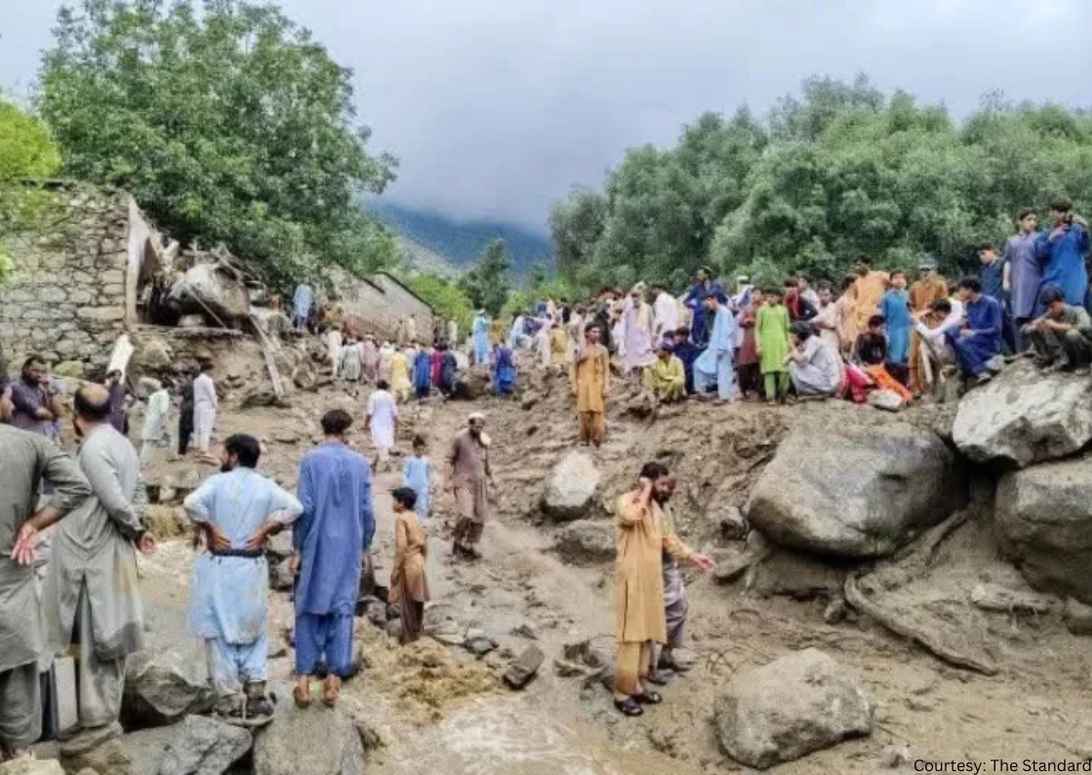PESHAWAR – Khyber Pakhtunkhwa is reeling under the devastation of one of the deadliest monsoon floods in recent history, as official figures confirm at least 358 deaths and widespread destruction across multiple districts. The tragedy, triggered by relentless rains and rare cloudbursts, has plunged the province into a humanitarian crisis, leaving survivors displaced, homes destroyed, and infrastructure crippled.
According to the Provincial Disaster Management Authority (PDMA), the death toll includes 287 men, 41 women, and 30 children. More than 181 people have been injured, many critically, while thousands of families are now living without shelter. The disaster has disproportionately hit Buner district, where 225 fatalities were recorded—most of them caused by roof collapses and flash floods.
Other districts including Shangla (36 deaths), Mansehra and Bajaur (22 each), Swat (20), Swabi (17), and Lower Dir and Nowshera (7 each) have also suffered heavy losses. With roads washed away, bridges collapsed, and entire communities cut off, the challenge of delivering aid has intensified.
Relief Operations Struggle to Keep Pace
Prime Minister Shehbaz Sharif has directed federal ministers to personally oversee relief work in the affected areas. Rescue operations are underway with the support of the military, local administration, and volunteers, but the scale of destruction has left thousands waiting for food, clean drinking water, and emergency medical supplies. Mass burials have become common in villages, as authorities race against time to recover bodies from debris.
The National Disaster Management Authority (NDMA) has issued warnings of more monsoon spells through early September, sparking fears that the situation may worsen before it improves. Officials are also urging people in vulnerable regions to evacuate, but residents in remote areas complain of delayed warnings and inadequate evacuation arrangements.
Climate Change and Accountability Questions
Experts link the intensity of the current disaster to climate change, citing heavier-than-normal monsoon rainfall patterns in recent years. Environmental analysts warn that without urgent measures, such extreme weather events will only become more frequent. Meanwhile, affected communities accuse local authorities of negligence, arguing that timely evacuation notices could have saved lives.
The Human Cost Beyond Numbers
Behind the grim statistics lies a human tragedy of immense scale: children orphaned, farmers watching their fields drown, and families struggling to survive under makeshift shelters. Entire valleys that once sustained livelihoods now stand waterlogged, schools lie in ruins, and recovery appears distant.
Relief camps, though operational, remain overcrowded and under-resourced, with reports of shortages in essential medicines and food supplies. The humanitarian need far outweighs the assistance delivered so far, intensifying calls for both provincial and federal governments to accelerate aid and rehabilitation efforts.
This story has been reported by PakTribune. All rights reserved.



